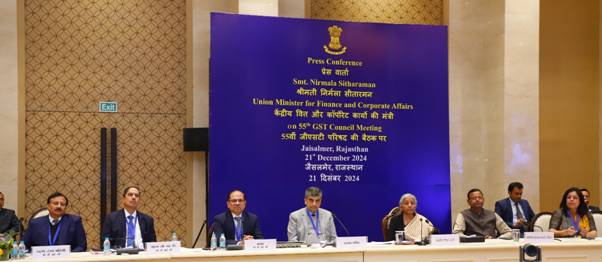On November 12, 2024, the GST Network (GSTN) issued an advisory regarding the initial implementation phase of the Invoice Management System (IMS), a new functionality introduced on the GST portal in October 2024. This optional feature is designed to provide taxpayers with greater control over their invoices by allowing recipients to accept, reject, or keep pending invoices reported by suppliers in GSTR-1/1A/IFF. Here’s an overview of how the IMS works, potential issues during the initial phase, and steps taxpayers can take to avoid errors.

Overview of the Invoice Management System (IMS)
The Invoice Management System (IMS) is a tool integrated into the GST portal to facilitate better management of invoices between suppliers and recipients. Here’s a breakdown of its key functions:
Invoice Actions for Recipients:
- Recipients of goods or services can accept, reject, or keep pending invoices reported by their suppliers.
- These actions can be performed on invoices saved or furnished in GSTR-1/1A/IFF by the supplier.
Generation of GSTR-2B:
- Based on the actions taken by the recipient on IMS, the system generates the recipient’s GSTR-2B on the 14th of the subsequent month.
- The Input Tax Credit (ITC) for any rejected invoices will not be available in GSTR-2B, ensuring only accepted invoices contribute to ITC claims.
Auto-population in GSTR-3B:
- The liability and ITC information is auto-populated in GSTR-3B based on the details from GSTR-1/1A and GSTR-2B.
- Taxpayers retain the ability to edit these auto-populated details in GSTR-3B before finalizing the filing, providing flexibility to correct any discrepancies.
Initial Implementation Phase Challenges
Since IMS is a newly introduced system, some taxpayers may experience challenges or make mistakes while performing actions on the IMS. Possible issues include:
- Errors in Accepting or Rejecting Invoices: Recipients may inadvertently accept, reject, or keep pending an invoice, which could affect the ITC in GSTR-2B.
- Incorrect ITC Auto-population in GSTR-3B: Mistaken actions on IMS could lead to incorrect ITC data in GSTR-2B, which in turn could result in incorrect auto-populated values in GSTR-3B.
- Impact on Supplier’s GSTR-3B: Incorrect actions by the recipient might also affect the supplier’s auto-populated liability in their GSTR-3B.
Correction Mechanism within IMS
To address any errors, the GSTN has implemented mechanisms within IMS to allow recipients to correct their actions before the GSTR-3B filing deadline:
Reversal of Actions:
- Taxpayers can change their previous actions on the IMS for a specific invoice—such as switching a “rejected” status to “accepted” or vice versa.
- This allows for accurate recalculation of GSTR-2B before it auto-populates ITC in GSTR-3B.
Re-computation of GSTR-2B:
- Any change in the action on IMS will trigger a recalculation of GSTR-2B.
- Taxpayers can use this feature until they file their GSTR-3B for the relevant period, ensuring that ITC details reflect the actual status of accepted invoices.
Advisory for Taxpayers
To ensure accuracy during this initial phase, the GSTN has provided the following recommendations:
- Double-Check Actions on IMS: Before accepting, rejecting, or keeping an invoice pending, verify its accuracy based on internal records.
- Edit GSTR-3B as Needed: If a mistake in IMS action results in incorrect auto-populated ITC or liability in GSTR-3B, taxpayers should edit these fields to reflect the correct ITC or liability amount based on actual documents.
- Use Caution with ITC Claims: Avoid claiming ITC for rejected invoices or invoices that have been kept pending. Only accepted invoices should be considered for ITC.
Sample GSTR-3B Correction Process
Below is an example of how a taxpayer can correct an error made on IMS during the initial implementation phase:
| Step | Action |
|---|---|
| 1. Verify Invoice | Review invoices from suppliers to confirm accuracy. |
| 2. Action on IMS | Mark each invoice as “Accepted” only if it meets all criteria; reject or keep pending if necessary. |
| 3. Recompute GSTR-2B | Update any incorrect actions to trigger a new GSTR-2B calculation. |
| 4. Edit GSTR-3B | If needed, adjust the ITC or liability values in GSTR-3B before filing. |
The IMS offers a streamlined process for managing invoices and accurately reflecting ITC in GSTR-3B. During the initial implementation phase, taxpayers are encouraged to follow the advisory carefully to prevent errors in ITC claims and ensure compliance. By actively verifying actions on IMS and making adjustments as needed in GSTR-3B, taxpayers can take full advantage of the system’s features while avoiding potential mistakes.
For further assistance, taxpayers can refer to the FAQs provided by GSTN or reach out to the GST helpdesk for support.
Thanking You,
Team GSTN
Visit www.cagurujiclasses.com for practical courses











